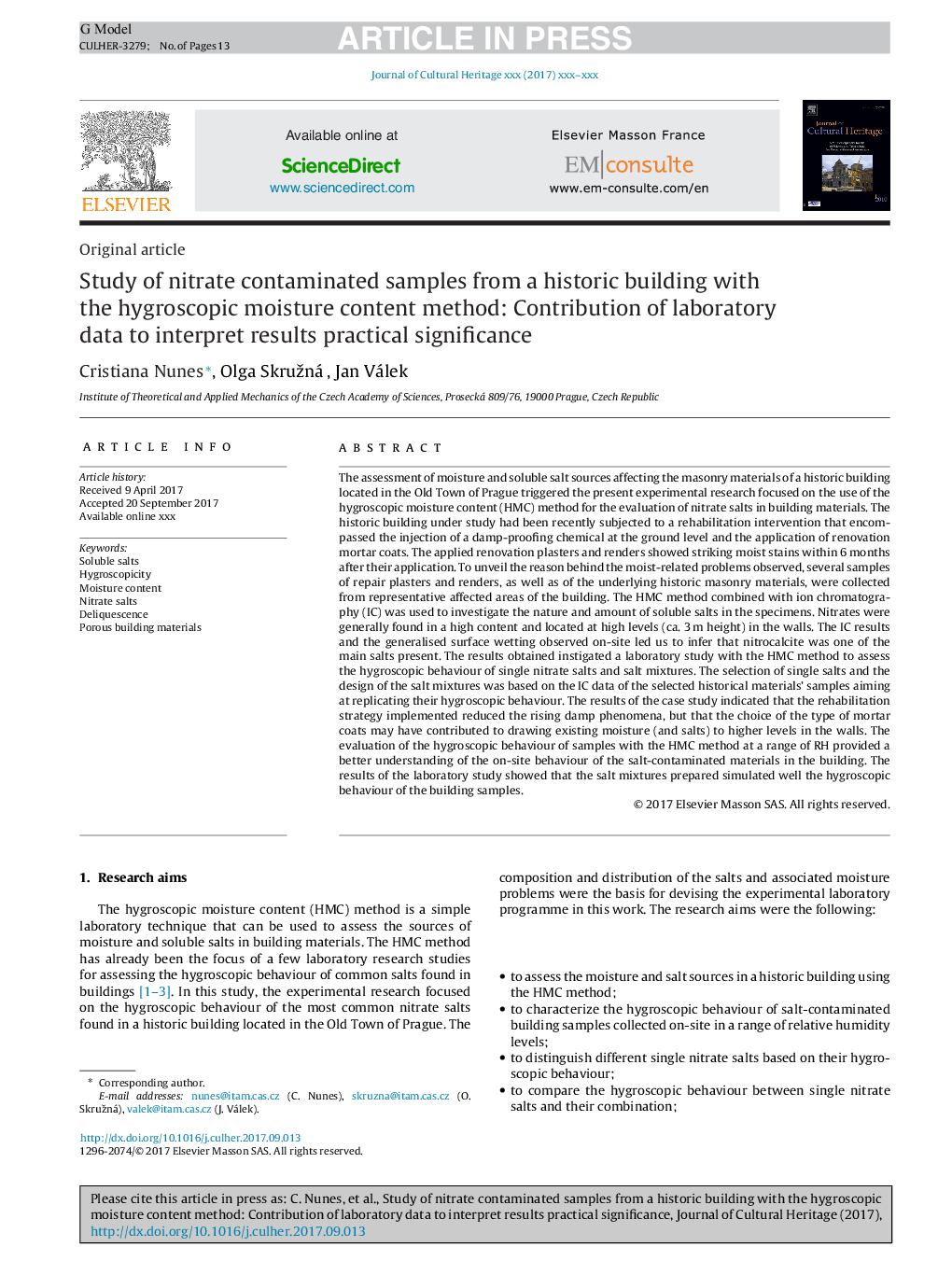ترجمه فارسی عنوان مقاله
بررسی نمونه های آلوده به نیترات از یک ساختمان تاریخی با روش رطوبت هیروشوپیک: داده های آزمایشگاهی برای تفسیر نتایج عملی
عنوان انگلیسی
Study of nitrate contaminated samples from a historic building with the hygroscopic moisture content method: Contribution of laboratory data to interpret results practical significance
| کد مقاله | سال انتشار | تعداد صفحات مقاله انگلیسی |
|---|---|---|
| 149903 | 2018 | 13 صفحه PDF |
منبع

Publisher : Elsevier - Science Direct (الزویر - ساینس دایرکت)
Journal : Journal of Cultural Heritage, Volume 30, MarchâApril 2018, Pages 57-69
ترجمه کلمات کلیدی
نمکهای محلول هیدروکسی کیت، محتوای رطوبت، نمکهای نیترات، محکومیت مصالح ساختمانی متخلخل،
کلمات کلیدی انگلیسی
Soluble salts; Hygroscopicity; Moisture content; Nitrate salts; Deliquescence; Porous building materials;

